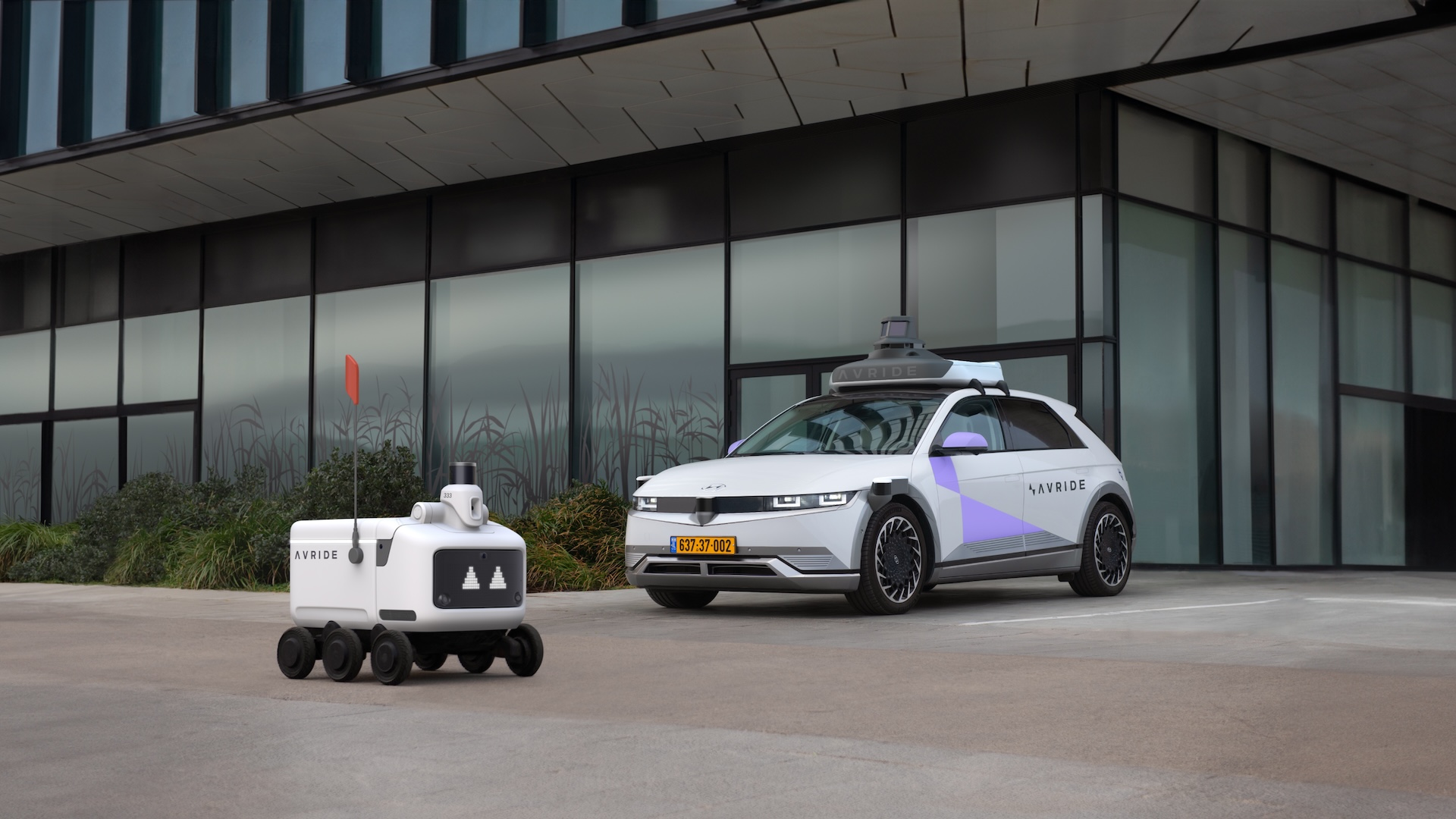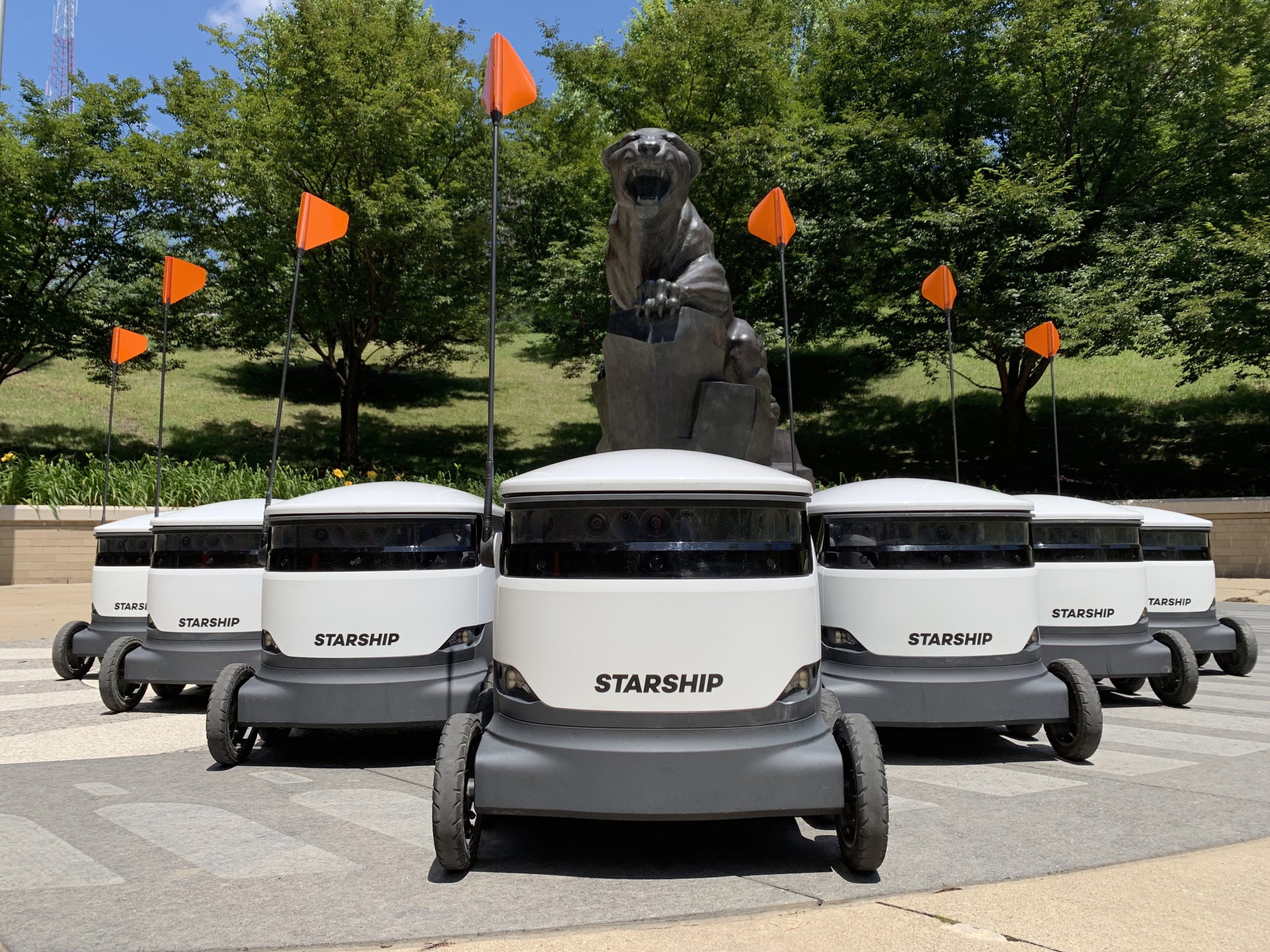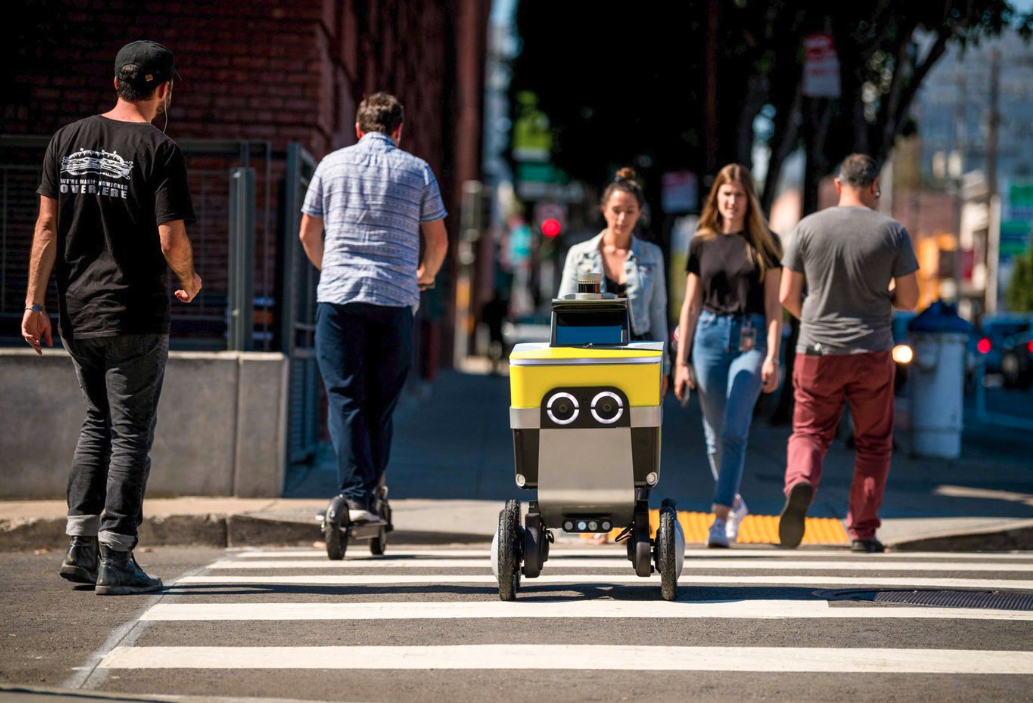When it comes to robotics in the restaurant industry, early innovation focused-on food delivery and robot food runners.
But lately, delivery robots and drones have taken a back seat as restaurants turn to back of the house automation to save on labor costs. Indie concepts and chains such as Kernel, CaliExpress by Flippy, White Castle, Chipotle, and Jack in the Box are all experimenting with kitchen robotics.
However, food delivery robots are still proving their value in an industry where meal delivery sales continue to rise. In March, sales tied to major delivery providers like DoorDash rose 8 percent year-over-year, according to Bloomberg Second Measure. The robot-delivery market is expected to grow to $1.8 billion by 2028, up from $400 million in 2023, according to MarketsandMarkets Research.
The latest startup to join the ranks of companies like Serve Robotics, Cartken, and Starship in deploying autonomous delivery robots is Avride.
Here’s a closer look at Avride, along with an update on its key competitors:
Avride

Avride develops autonomous delivery robots and self-driving cars.
The Austin, Texas-based startup is developing two products in parallel—self-driving cars and autonomous delivery robots.
Company spokesperson Yulia Shveyko told Food on Demand that delivery “robots are solving an easier task than cars (sidewalks vs. roads), so they are ready to be commercially deployed, while with cars it will take a bit longer due to higher complexity of the task and safety requirements.”
The autonomous delivery robots are the size of a suitcase with six wheels, she said. The delivery robots, deployed in December, are big enough to store about six big pizzas and several bottles of soda. The bot contains a thermal bag to keep foods at the right temperature. It travels at a speed of up to 5 mph and navigates only on sidewalks, not roads.
The delivery bot is equipped with LIDAR and camera sensors, which allow it to get a 3-D version of its surroundings so it can analyze “the most versatile, safe and efficient way to continue moving forward,” Shveyko said. The bot also features ultrasonic sensors, which allow the robot to make an immediate stop in case someone or something “out of nowhere” jumps in front of the robot.
“Everyone wants to test the robot. That’s fine. We’re ready for that,” Shveyko said.
Another key function of the Avride bots is its battery power. The robots can run 10 to 12 hours on one charge. When the charge is out, you don’t have to plug it in for hours to recharge. Instead, batteries can be easily swapped out with new batteries in about 30 seconds. The company has rolled out contactless charging stations at a university in South Korea, one of a handful of locations where Avride bots are deployed for food deliveries.
“This [contactless charging is] really cool because it makes robots more autonomous. You do not need a human to plug it to the socket,” Shveyko said.
Outside of South Korea, the bots are deployed in Austin, Texas, and Dubai. In Dubai, Avride is working with Talabat, a local food delivery operator. In Austin, Avride is working with three restaurants in the Mueller district of the city. It’s an ideal area for bot delivery as it has a really good pedestrian infrastructure, Shveyko said.
“Perfect bike lanes, perfect sidewalks. Beautifully marked crosswalks,” she said of the neighborhood.
Shveyko mentioned that local, independent restaurants in Austin view the robots as an excellent delivery solution because they cannot afford to hire their own delivery fleets and do not want to pay the fees associated with third-party delivery services. They perform about a couple dozen deliveries a day.
In Austin, the company works with Colleen’s Kitchen, Rebel Cheese, and Xian Sushi and Noodle.
Ashley Fric, owner of Colleen’s Kitchen said the ordering and delivery process is seamless.
“When we need to deliver an order, we just press a button, place it in the robot, and it’s on its way,” Fric said. “This approach helped us keep up with delivery demand while saving money. Deliveries have really increased, and as a small business, we can’t afford the costs of staff and insurance of our own deliveries. Using the robots has been wonderful and more profitable. There is a delivery fee for guests, but it’s often less than other services.”
Looking ahead Avride is eyeing new locations to operate in.
“We are looking to expand our areas of operation in Austin and have already mapped a few more districts,” Shveyko said. “We are also in talks with potential partners across Texas, in the U.S. and globally. We’ll be sharing more news about it in the coming months.”
Cartken

Cartken, an early player in robotic delivery has raised $22.5 million.
In July, Cartken, an early player in the robot delivery space, announced it had raised $22.5 million in aggregate funding. The latest round of $10 million was led by 468 Capital, a four-year-old technology investment firm focused on supporting entrepreneurs with global ambitions.
Cartken’s autonomous delivery robots navigate diverse environments such as industrial complexes, production facilities, college and office campuses, and neighborhoods. The company has been delivering food on college campuses through a partnership with Grubhub. Cartken is also fully integrated with delivery platforms like Uber Eats and Grubhub.
Grubhub partners with Cartken to provide robot delivery at college campuses.
Cartken recently launched operations in Tokyo, partnering with Uber Eats and Mitsubishi Electric.
“Since its inception, Cartken has completed hundreds of thousands of deliveries, averaging an impressive 36,000 deliveries per month,” the company said in a statement. “In 2023 alone, this efficiency saved employees over 10,000 hours in transportation time.”
Starship Technologies

In the U.S., Starship delivery robots are primarily on campuses.
Starship Technologies currently has more than 2,000 robots deployed globally and will be increasing production this year, the company told Food on Demand.
Starship operates in more than 100 locations in six countries, including the U.S., United Kingdom, Estonia, Germany, Denmark, and Finland. In the U.S., the locations are primarily college campuses such as UCLA, Oregon State, University of Houston, and University of Tennessee at Knoxville.
In other global locations, the robots deliver to local neighborhoods.
Starship robots deliver from a variety of national restaurant chains, local eateries, and national grocers such as Co-op in the U.K. and S-Group in Finland. Other partners include Grubhub, Aramark, Chartwells, and Sodexo in the U.S. and Bolt in Estonia. Starship offers two delivery methods – delivering directly to customers via the Starship app or delivery as a service (DaaS), where the robots are integrated directly into the partner’s delivery structure.
Grubhub has been working with Starship since 2022 and currently partners to provide robot delivery at 17 campuses across the country, including Notre Dame, University of Tennessee, Miami of Ohio, Arizona State University, University of Kentucky and Southern Methodist University.
“When school is in session, more than 1,000 orders are completed by robots every day,” Grubhub said.
Unlike Uber Eats, Grubhub only uses robots on college campuses.
Starship’s autonomous robots are designed to travel on sidewalks. They can also climb curbs, cross streets and operate in a wide range of weather conditions, from the frigid winters in Finland to the sizzling summers in Phoenix, the company said.
“The sustainable robots can operate for 18 hours on a single charge and the company is in the process of rolling out wireless charging across its fleet so the robots can recharge autonomously and wirelessly,” the company said.
Serve Robotics

Serve’s robots deliver food from more than 300 restaurants in Los Angeles.
Serve Robotics, originally part of Postmates, has been testing autonomous delivery robots in Los Angeles for about six years.
The company has 100 robots deployed through partnerships with Uber Eats and 7-Eleven. Serve’s robots deliver food for more than 300 restaurants in Los Angeles. Orders are made through Uber Eats.
The company plans to deploy up to 2,000 robots on Uber Eats next year. Uber is an investor.
“We’re in Los Angeles right now but are considering new markets for next year that include Dallas, San Diego, and Vancouver,” CEO Ali Kashani told Food on Demand.
Serve Robotics was spun off from Uber in late 2021 after the ride-share company acquired Postmates.
Nancy Luna is a contributing writer for Food on Demand. She can be reached at [email protected]


